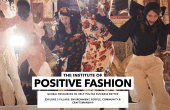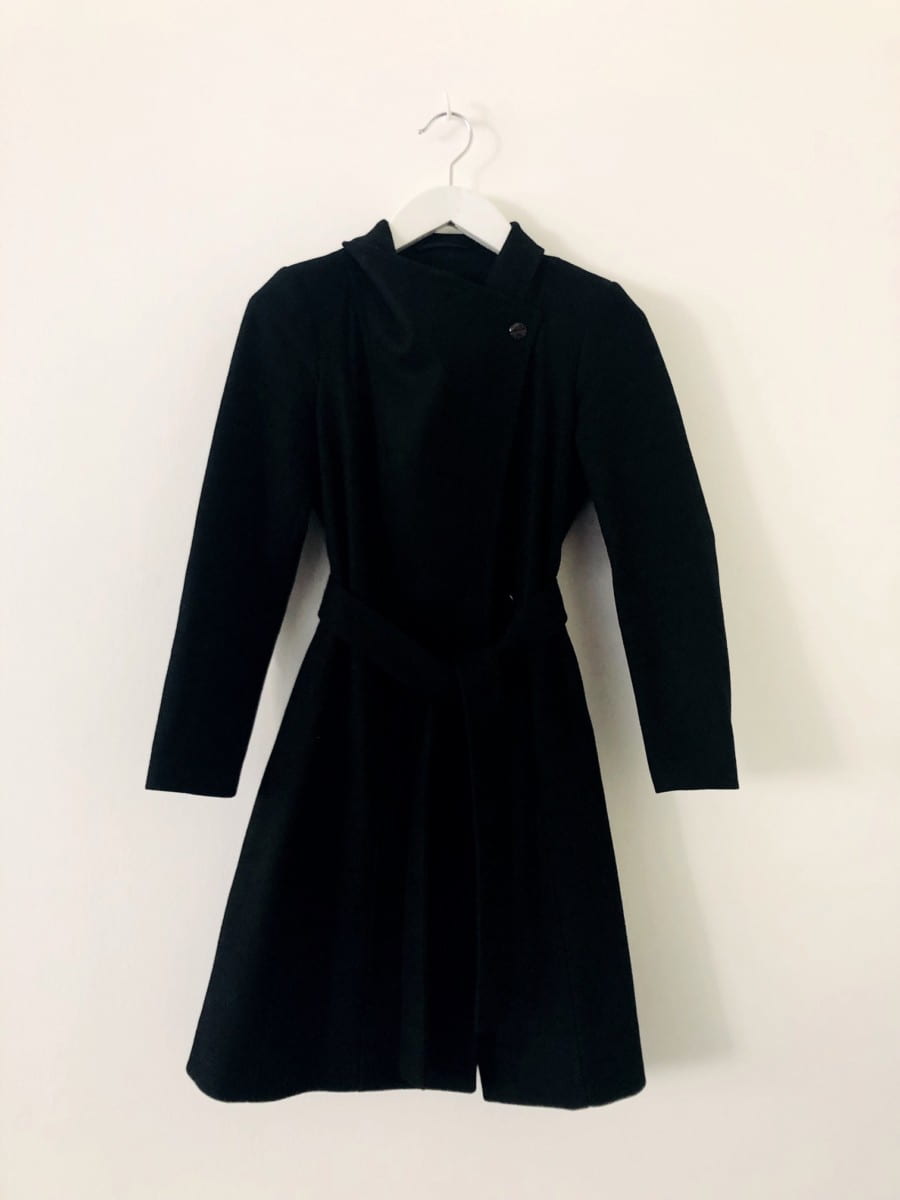The recent death of Yves St Laurent is a pertinent reminder of the role a great fashion designer can play in altering the way society expresses itself through dress and how such a figure brings about real change. Saint Laurent’s creation, ‘Le Smoking” trouser suit of 1967 helped to emancipate women and support greater equality by freeing them from the feminine constrictions of the skirt. His ability to combine masculine and feminine in the cut combined with the colour and texture of his garments enabled women to feel empowered without being male and allowed broader society not to feel emasculated by women wearing the trousers. In achieving this, did Saint Laurent impose a change in how women wished to dress or was it rather as Dior was reported to have said:
“No one person can change fashion – a big fashion change imposes itself”?
(The World of Carmel Snow). Surely the phenomenon of fashion is its ability to capture the movement and feeling of the times.
The late 1960s saw a tangible desire for greater freedom of expression epitomised by the student protests and riots of 1968 and the rise of feminism and black power. Nearly half a century on, technology has changed communication and social interaction and the economic basis of our global society is far more interdependent, so our set of social, economic, cultural and political circumstances have changed. Was the ability of great designers like Chanel, Dior or Saint Laurent to bring about fundamental shifts in the way we dressed and thought about ourselves a 20th century phenomenon? With global expansion in the interest and the consumption of fashion, is the phenomenon of the great designer still able to emerge to exert such influence?
The key is the relationship of fashion to society. As Bumer stated, fashion “always seems to keep abreast of the times. It is sensitive to the movement of current developments as they take place in its own field, in adjacent fields, and the larger social world”. Social conditions affect fashion. In the nineteenth century, a stratified social structure meant fashions were originated by the upper classes and then progressively adopted by the middle and lower orders. By the time the designs had reached the masses, the upper echelons had moved on. The great social changes of the 20th century including two world wars, greater migration of peoples and increasing industralisation radically altered the economic and social basis of society. In the first 70 years of the last century, conditions were perfect for supporting the great designer – the iconic head who made fashion more accessible. Dior’s New Look of 1947 and Mary Quant’s popularisation of the mini skirt in the 1960s captured the feeling of the times and was made possible by the new means of production which meant everyone could buy into the look.
As the 20th century progressed so the role of the designer changed. In the 1980s Gaultier, Mugler and the Japanese and Belgian schools emerged to help create the great designer decade. Theirs was a collective fashion phenomenon with their individual influences less dramatic than before. As we shifted into a postmodern, interdependent global and technologically based society so the fashions reflected this new social characteristic with the designer’s influence increasingly fragmented and segmented.
In the 21st century where consumption and the creative and cultural industries are so significant to our global economies, the role of the fashion designer has become more central and critical. Today’s fashion and its industry is a confluence of factors which affect and influence many different aspects of our lives. Its global nature involves both hi-tec manufacturing and craft skills; while embracing new technologies, often driving their development. Encompassing major brands as well as niche designers, it involves the media: from the broadsheets to the latest underground fanzine. Driven by celebrity, yet inherently creative, it imbues us with our sense of identity,. making us feel as though we as individuals anticipate the zeitgeist.
We consume in a personal style that makes clear our individuality, but this style is nevertheless linked to the group we aspire to be a part of. These groups or tribes are the future for marketing, distribution and consumption. They are smaller than the traditional horizontal economic bands and signal upward shifts in our consumption levels as they encompass our lifestyle –for being fashionable is no longer just about clothes but all aspects of our lifestyle. New efficiencies in distribution and marketing make this possible. Virtual sites support these groups as people turn away from the mass market into niche areas. Location turns global because individuals network together through blogs, websites and interest groups. Credit cards, databases, bar codes and the Internet have combined to make mass customisation and greater individuation possible. Formerly unprofitable products and markets can be lucrative as smaller niche markets collectively form a market that rivals the traditional hit or main brand product. However, as we become used to being able to buy whatever product best expresses the lifestyle we have chosen, so we experience competitive upscale consumption, as pressure intensifies to consume irrespective of whether we can afford it or not.
The fashion industry has responded to this huge demand with the rise of fast fashion. At its most extreme it can be seen as the ultimate democratisation of fashion, enabling us all to buy into the ideas of self-expression. However, ultimately it raises questions about the ethical basis of fashion, as the environment cannot support such levels of consumption. What effect is this going to have on the phenomenon that is fashion? As we become aware of the implications of the costs of the energy, land and water resources that textile manufacture requires and the ethical issues surrounding cheap labour, we are forced to consider a new approach to design and manufacture of clothes. The fashion designer will play, yet again, a pivotal role in changing society: we are moving towards a different brave new fashion world.
As technology plays a critical part in our lives, so fashion designers look to chemists, physicists, engineers to collaborate on the development of new textiles and the integration of technological devices. These devices can read our vital signs, react to the environment our body is occupying and meet our ideas and whims, by integrating power pods, remote control devices, wireless communicators, seamless knit, CAD, digital print, wearable cameras and TV monitors into our clothing. This is a revolution in the function and meaning of fashion and clothing and the territories they occupy. The collaboration between the chemistry and fashion professors, Tony Ryan and Helen Storey on the creation of the dissolving dress makes us consider the de-manufacture of clothing as well as its creation. Such collaborations will profoundly affect how we view clothes as we are able to surf the web, monitor our body for medication, communicate with others, heat or cool ourselves as the clothes we are wearing respond to voice recognition, body movement and networks. Chemists, physicists, engineers and fashion designers are, in effect, working together to reconceptualise our relationship to clothing
The challenge for the future fashion phenomenon will be how growth can be based on efficient and new technologies with better stewardship while being ethically viable. Just what will a fashionable item of clothing be if it responds to our voice, contains our mobile and even downloads our favourite TV programme? We in the industry need to understand the intellectual challenge behind the creation of clothes. Society will play a part in how we set the bar for what is seen to be innovative, creative design that exploits the possibilities of technological developments to create a wide range of sustainable, ethical fashion products that are applicable to all aspects of our lives.
As consumers, we will not just recycle but redesign our attitude to clothes. We will be aware of the implications of our purchases – the full production costs: labour as well as environmental implications. Second hand – not just vintage –will be important and the need for greater care of clothes – repairing rather than throwing – and looking after the technological components. We will play a role in production and the review and development of looks and styles that will express our particular group identity.
For producers, the pressure for ethically and environmentally produced clothes will increase. We shall see growth in small ethical manufacturing and niche production with greater understanding of the possibilities of interaction design where each aspect of a product is part of a complete experience that improves the quality of our lives. Feeling good in fashionable clothes will be a critical component. Encouraging consumers to value clothes and the resources needed to produce them will be a responsibility of producers. If we want a sustainable fashionable future that meets the needs of our complex and fractured 21st century society, we are going to have to work hard to have it. This places the designer at the heart of our economic, social and cultural futures. The singular fashion designer may not be as lauded as Saint Laurent, but fashion designers will help to systematically reinvent the way that we live.




